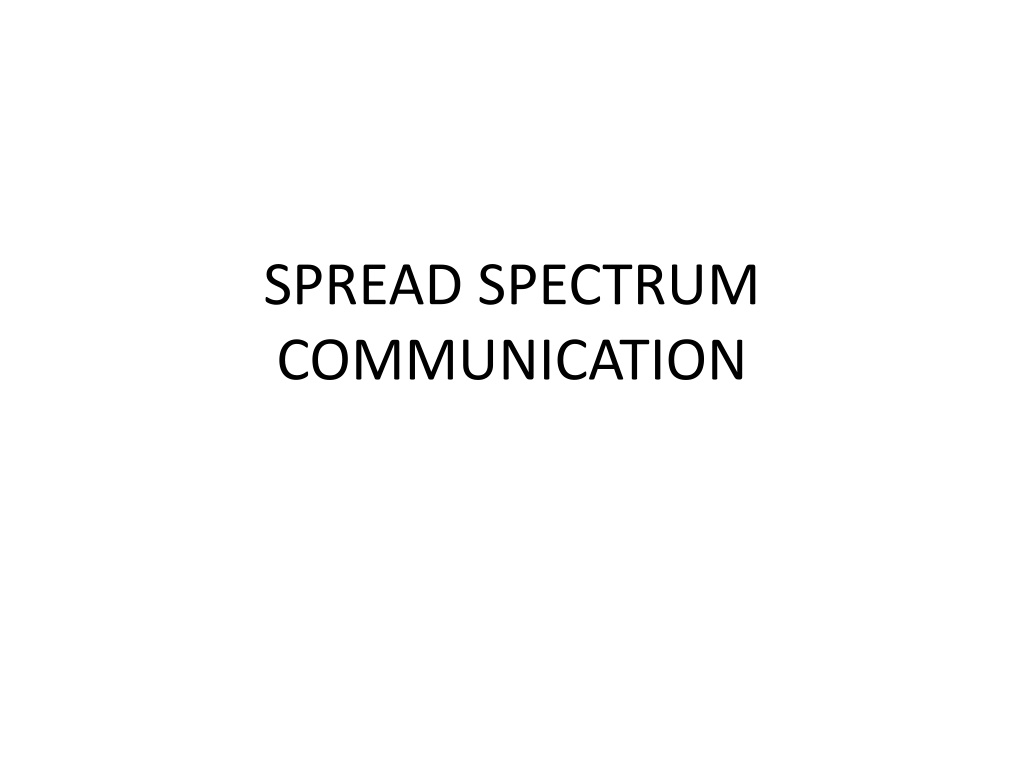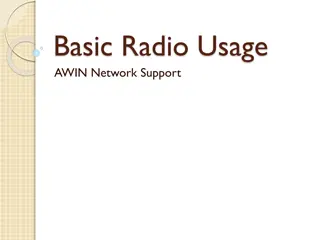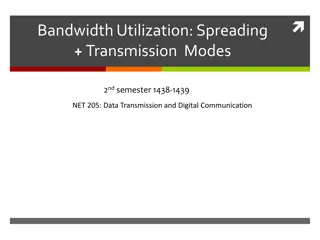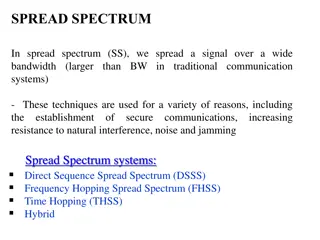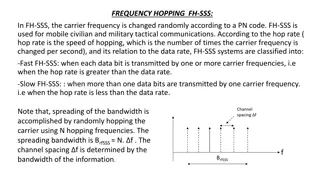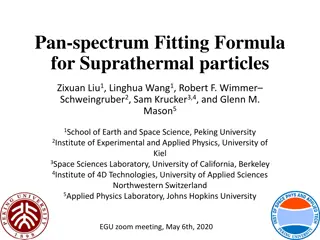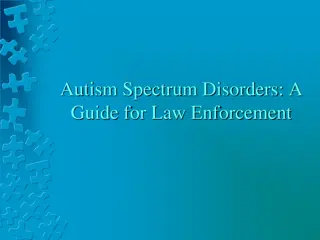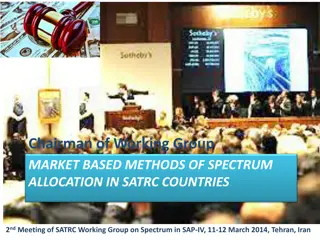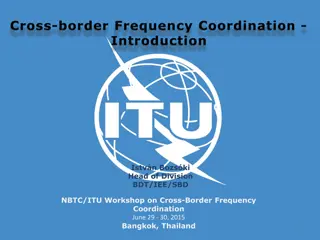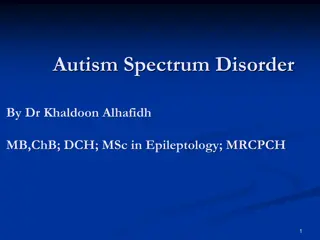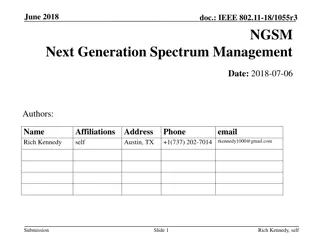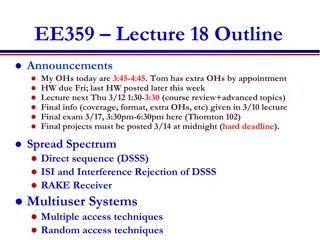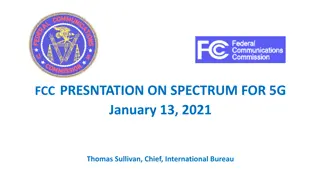Understanding Spread Spectrum Communication
Spread spectrum communication is a favored technology in military and commercial applications due to its resistance to jamming and interception. By spreading signals over a wide range of frequencies, it enhances security through encryption and authentication, making it challenging for attackers to detect, intercept, or interfere with the signals. Learn about the working principles, techniques, and applications of spread spectrum communication in this informative overview.
Download Presentation

Please find below an Image/Link to download the presentation.
The content on the website is provided AS IS for your information and personal use only. It may not be sold, licensed, or shared on other websites without obtaining consent from the author. Download presentation by click this link. If you encounter any issues during the download, it is possible that the publisher has removed the file from their server.
E N D
Presentation Transcript
SPREAD SPECTRUM COMMUNICATION
CONTENTS INTRODUCTION SPREAD SPECTRUM COMMUNICATION? HOW IT WORKS SPREAD SPECTRUM TECHNIQUES APPLICATIONS
ITRODUCTION TO SPREAD SPECTRUM COMMUNICATION Spread-spectrum radio communications is a favorite technology of the military because it resists jamming and is hard for an enemy to intercept, Just as they are unlikely to be intercepted by a military opponent
Overview of Spread Spectrum Communications Spread Spectrum is a means of transmission in which the data sequence occupies a bandwidth in excess of the minimum bandwidth necessary to send it. Effectively the signal is mapped to a higher dimension signal space Signal spreading is done before transmission by using a spreading sequence. The same sequence is used at the receiver to retrieve the signal Spread Spectrum is most effective against interference (intentional or non-intentional) with fixed energy. Main commercial applications in wireless and GPS.
Why Spread Spectrum? Spread spectrum signals are distributed over a wide range of frequencies and then collected back at the receiver Initially adopted in military applications, for its resistance to jamming and difficulty of interception More recently, adopted in commercial wireless communications
NEED FOR SPREAD SPECTRUM Safeguards for physical security must be even greater in wireless communications Encryption: intercepted communications must not be easily interpreted Authentication: is the node who it claims to be?
How Spread Spectrum Works Spread Spectrum uses wide band, noise-like signals. Because Spread Spectrum signals are noise-like, they are hard to detect. Spread Spectrum signals are also hard to Intercept or demodulate. Further, Spread Spectrum signals are harder to jam (interfere with) than narrowband signals. These Low Probability of Intercept (LPI) and anti- jam (AJ) features are why the military has used Spread Spectrum for so many years.
Spreading Codes A noise-like and random signal has to be generated at the transmitter. The same signal must be generated at the receiver in synchronization. We limit the complexity by specifying only one bit per sample, i.e., a binary sequence. Spread Spectrum signals use fast codes that run many times the information bandwidth or data rate. These special "Spreading" codes are called "Pseudo Random" or "Pseudo Noise" codes. They are called "Pseudo" because they are not real Gaussian noise.
PN Sequences PN generator produces periodic sequence that appears to be random PN Sequences Generated by an algorithm using initial seed Sequence isn t statistically random but will pass many test of randomness Sequences referred to as pseudorandom numbers or pseudonoise sequences Unless algorithm and seed are known, the sequence is impractical to predict
SPREAD SPECTRUM TECHNIQU THE MAJOR SPREAD SPECTRUM TECHNIQUES ARE DSSS FHSS
Direct Sequence Spread Spectrum (DSSS) Data signal is multiplied by a spreading code, and resulting signal occupies a much higher frequency band Spreading code is a pseudo-random sequence
Frequency Hopping Spread Spectrum (FHSS) Data signal is modulated with a narrowband signal that hops from frequency band to frequency band, over time The transmission frequencies are determined by a spreading, or hopping code (a pseudo- random sequence)
Advantages of Spread Spectrum Reduced crosstalk interference: Better voice quality/data integrity and less static noise Lowered susceptibility to multipath fading Inherent security: Co-existence: Longer operating distances Hard to detect: Hard to intercept or demodulate: Harder to jam
